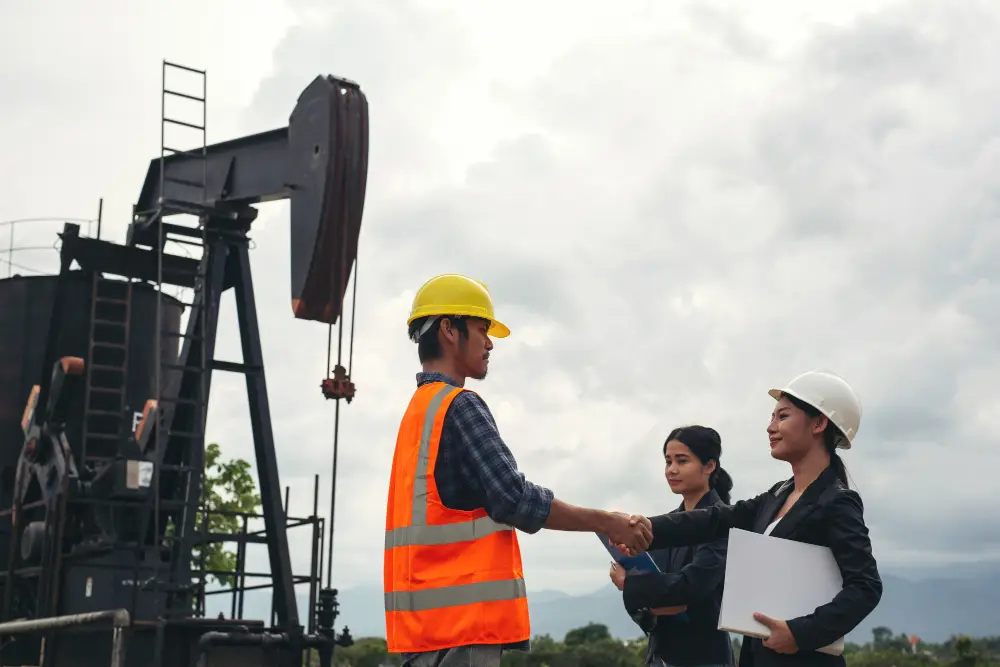The Louisiana oil and gas industry plays a pivotal role in the state’s economy and the nation’s energy supply. Behind the scenes, thousands of dedicated workers face a demanding and often perilous work environment. Despite advancements in safety protocols, workplace injuries remain a stark reality for oil and gas workers in Louisiana.
In this comprehensive blog post, we shed light on the most common workplace injuries plaguing Louisiana’s oil and gas workforce. We delve into the statistics, explore the causes, and highlight the crucial importance of safety measures to mitigate these risks.
The High Stakes: Statistics on Workplace Injuries in Louisiana Oil and Gas
The oil and gas industry is inherently hazardous, with workers exposed to a multitude of risks daily. The statistics paint a sobering picture:
- Fatality Rates:
- According to the Bureau of Labor Statistics (BLS), the oil and gas extraction industry has a fatality rate significantly higher than the national average for all industries.
- In 2020, the oil and gas extraction sector recorded a fatality rate of 14.1 per 100,000 full-time equivalent workers, compared to the national average of 3.5.
- Non-Fatal Injuries:
- Thousands of non-fatal injuries occur annually in the Louisiana oil and gas industry.
- These injuries can range from minor cuts and bruises to severe, life-altering conditions.
- Injury Trends:
- While efforts have been made to improve safety, injury rates in the oil and gas industry fluctuate.
- It is essential to remain vigilant and continually adapt safety measures to address emerging risks.
Unveiling the Culprits: Common Workplace Injuries
Several types of injuries are particularly prevalent among oil and gas workers in Louisiana:
- Struck-By/Caught-In/Caught-Between Injuries:
- Workers can be struck by falling objects, caught in machinery, or caught between moving equipment or vehicles.
- These incidents can result in severe injuries, including crush injuries, amputations, and fatalities.
- Slips, Trips, and Falls:
- Oil and gas worksites often have uneven terrain, slippery surfaces, and elevated platforms, increasing the risk of falls.
- Falls can lead to fractures, head injuries, and spinal cord injuries.
- Overexertion and Repetitive Strain Injuries:
- Oil and gas work often involves heavy lifting, repetitive motions, and awkward postures, contributing to overexertion and repetitive strain injuries.
- These injuries can affect muscles, tendons, and joints, causing chronic pain and disability.
- Exposure to Hazardous Substances:
- Workers may be exposed to toxic chemicals, flammable materials, and harmful fumes.
- Exposure can cause respiratory problems, skin irritations, and long-term health issues.
- Fires and Explosions:
- The presence of flammable materials and high-pressure equipment creates a risk of fires and explosions.
- These incidents can result in severe burns, blast injuries, and fatalities.
- Vehicle Accidents:
- Transportation to and from worksites and on-site vehicle operations pose a risk of accidents.
- These accidents can cause serious injuries and fatalities.
Underlying Causes: Understanding the Root of the Problem
To effectively prevent workplace injuries, it is crucial to identify their underlying causes. Several factors contribute to the high incidence of injuries in the oil and gas industry:
- Inadequate Safety Training:
- Workers may not receive comprehensive training on safe work practices, hazard recognition, and emergency procedures.
- Fatigue:
- Long work hours, shift work, and physically demanding tasks can lead to fatigue, increasing the risk of errors and accidents.
- Pressure to Meet Production Goals:
- The pressure to meet production targets can sometimes lead to workers taking shortcuts or compromising safety protocols.
- Lack of Communication:
- Miscommunication or inadequate communication among workers and supervisors can create hazardous situations.
- Equipment Failure or Malfunction:
- Poorly maintained equipment or equipment malfunctions can lead to accidents.
Prioritizing Safety: Mitigating the Risks
While the oil and gas industry is inherently dangerous, a multitude of safety measures can be implemented to reduce the risk of workplace injuries:
- Comprehensive Safety Training:
- Ensure all workers receive thorough training on safe work practices, hazard recognition, and emergency procedures.
- Regular Safety Inspections:
- Conduct routine inspections of worksites, equipment, and machinery to identify and address potential hazards.
- Proper Maintenance of Equipment:
- Maintain equipment and machinery in good working order to prevent malfunctions and accidents.
- Fatigue Management:
- Implement policies to address fatigue, such as limiting work hours, providing adequate rest breaks, and promoting healthy sleep habits.
- Open Communication:
- Foster a culture of open communication where workers feel comfortable reporting safety concerns without fear of reprisal.
- Personal Protective Equipment (PPE):
- Provide workers with appropriate PPE, such as hard hats, safety glasses, gloves, and hearing protection.
- Emergency Preparedness:
- Establish emergency response plans and ensure workers are trained on evacuation procedures and first aid.
The Aftermath: Seeking Legal Recourse
If you or a loved one has suffered a workplace injury in the Louisiana oil and gas industry, seeking legal counsel is crucial. An experienced personal injury attorney can help you navigate the complex legal process and fight for the compensation you deserve.
The oil and gas industry in Louisiana provides vital energy resources, but it comes at a cost. The risk of workplace injuries is a constant reality for the dedicated workers who fuel our nation. By understanding the common injuries, their causes, and the importance of safety measures, we can strive to create a safer work environment for all.
If you have been injured on the job, remember that you are not alone. Legal help is available to protect your rights and ensure you receive the compensation you deserve.





